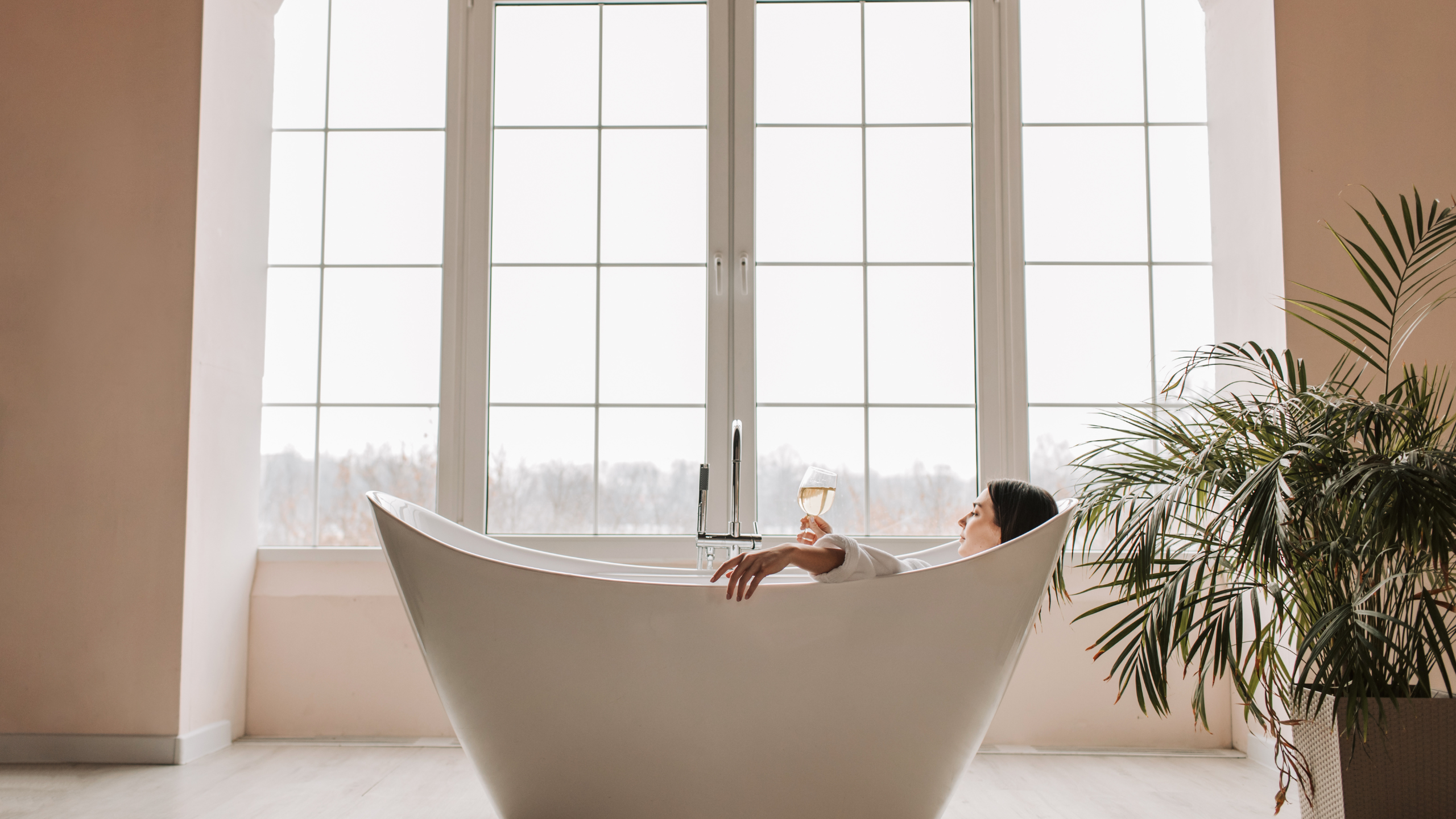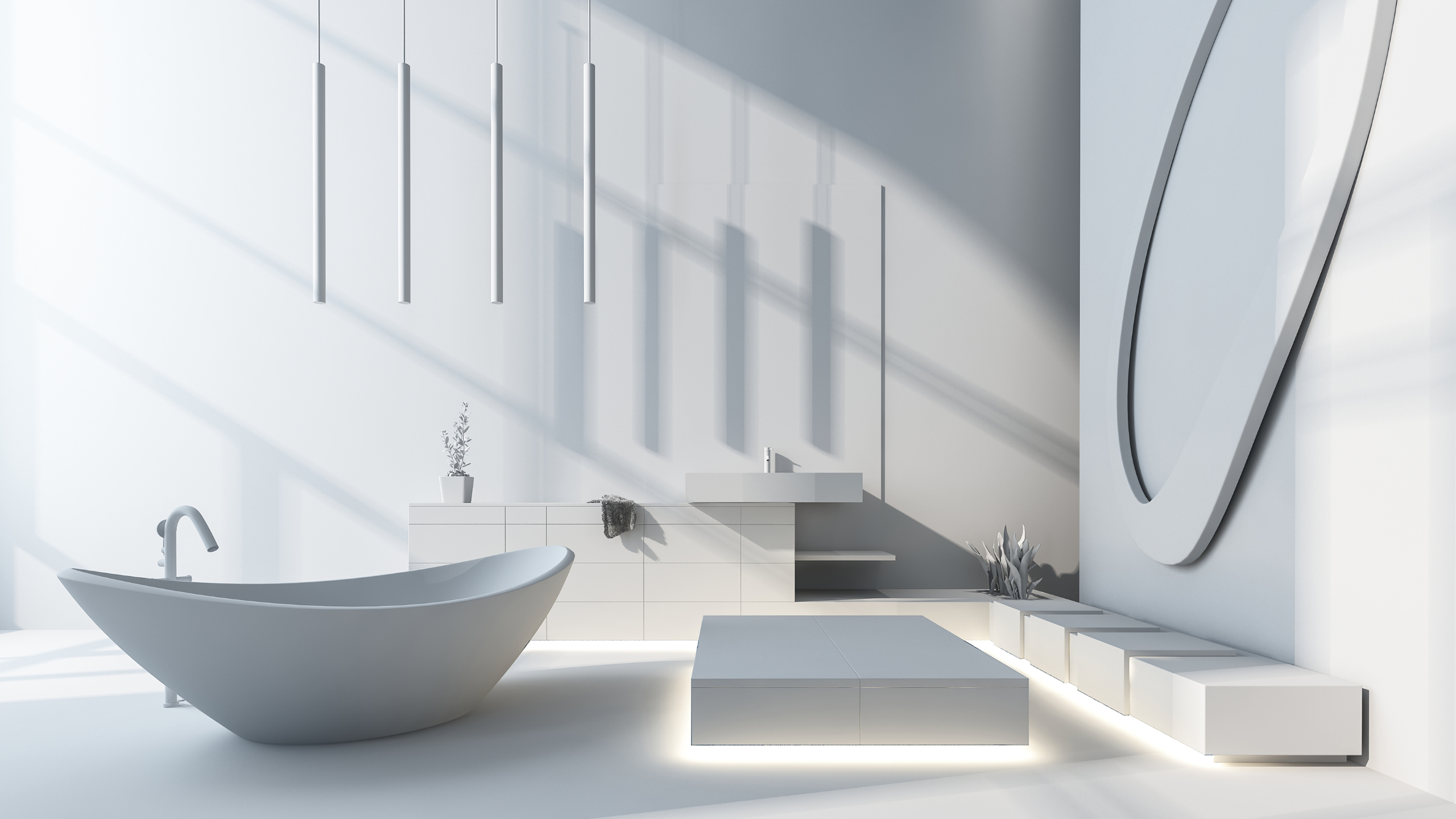Is your old, worn-out bathtub making you long for a luxurious, spa-like experience at home? If yes, consider bathtub reglazing. This rejuvenating process can give your dated tub a brand-new look and feel without the high cost of a full replacement. This guide covers all aspects of bathtub reglazing, explaining the process step-by-step and helping you decide if it’s the right solution for your needs. Are cracks, chips, or difficult cleaning turning your bathroom into a stress zone? Transform it into a sanctuary with our resurfacing services at Newark Tub Reglazing.
What Bathtub Glazing Accomplishes:
Picture your bathtub as a blank canvas and the glazing process as a revitalizing brushstroke. Glazing involves applying a new coating to the tub’s surface, effectively hiding imperfections like chips, stains, and scratches while giving it a smooth, glossy finish that restores its original charm. Additionally, this process can seal cracks and leaks, extending the lifespan of your bathtub.
The Bathtub Reglazing Process:
Bathtub reglazing, or refinishing or resurfacing, involves a series of careful steps to achieve a flawless result. Here’s an overview of the process:
1. Preparation: Tub reglazing. First, the tub is thoroughly cleaned using specialized cleaners to remove built-up dirt, soap scum, and mineral deposits. Stubborn stains are treated with targeted solutions for complete removal. Next, the tub is carefully stripped of previous coatings or finishes using appropriate abrasives and techniques to achieve a bare, pristine surface. This step establishes an ideal foundation for the new finish, ensuring long-lasting results.
2. Repair: The repair phase addresses any surface imperfections on the tub to restore its structural integrity and ensure a flawless finish. Chips, cracks, and other damages are carefully filled and leveled using specialized compounds, creating a smooth and uniform surface. Additional reinforcement techniques such as fiberglass patching or reinforcement may be used for severe damage like large cracks or extensive deterioration. Precision is critical during this phase to seamlessly Combine the mended areas with the remaining tub’s surface.
3. Priming: A high-quality primer is applied to the surface once the tub is cleaned and repaired. The primer acts as a bonding agent, promoting the adhesion of the new coating and enhancing its durability. It also helps seal the surface, preventing any underlying issues from impacting the final finish. The choice of primer may depend on factors like the tub material and the specific reglazing products used. Multiple coats of primer may be applied to achieve optimal adhesion and coverage.
4. Application: Applying the new coating requires precision and expertise. Typically made of epoxy or polyurethane, the coating is carefully applied to the primed surface using specialized tools like rollers or spray guns. The coating’s thickness may vary based on the manufacturer’s recommendations and the desired finish. Great emphasis is placed on ensuring an even, uniform application, minimizing the risk of drips, runs, or uneven coverage. Multiple coats of the coating may be applied as necessary to achieve the desired level of coverage and durability.
5. Curing: After application, the new coating is curing to harden and effectively bond to the tub’s surface. The curing duration may vary depending on temperature, humidity, and the specific products used. During this time, avoiding using the tub is critical to prevent any damage to the freshly applied coating. Proper curing is essential for ensuring the longevity and durability of the reglazed finish. Therefore, following the manufacturer’s guidelines regarding curing times and conditions is crucial.
6. Finishing Touches: The final stage of the reglazing process involves addressing any minor imperfections and adding the finishing touches to achieve the desired aesthetic result. This may include sanding the surface to smooth out any rough spots or uneven areas, polishing to enhance the shine and luster of the finish, and buffing to eliminate any remaining residue and attain a flawless appearance. Attention to detail is crucial at this stage to ensure that the reglazed tub exudes a fresh, new look, ready to be enjoyed for years to come.
Copy
5 Considerations When Choosing Between Bathtub Reglazing and Replacement:
1. Cost: When considering the cost, it’s essential to factor in the price of labor and materials and the value you receive for each option. Bathtub reglazing is typically more cost-effective than replacing the tub entirely, as you don’t have to pay to remove the old tub and install a new one. Reglazing allows you to restore your bathtub’s fresh appearance at a fraction of the cost of a replacement. You can also avoid extra expenses associated with a replacement, such as plumbing or tile work.
2. Time: Time is an essential component, particularly when undertaking home improvement projects. Bathtub reglazing is significantly faster than replacing an entire tub, typically taking only a few days rather than weeks. Installing a new tub involves extensive demolition and installation work, resulting in a longer and potentially disruptive process. Therefore, reglazing is the more convenient and suitable option to enjoy your updated bathtub sooner and with minimal disruption.
3. Tub Condition: The condition of your bathtub is a critical factor in determining whether reglazing or replacement is the appropriate solution. Reglazing is an excellent option for tubs with minor issues, such as scratches or stains, and can restore their like-new appearance. However, replacement may be the safer choice for structural integrity if your tub has significant problems, like extensive cracks or rust. It’s essential to thoroughly Determine the extent of the damage and seek expert advice for expert advice.
4. Aesthetic Preferences: customize your tub’s appearance. Unlike replacing with a new tub, where your options may be limited, reglazing allows you to select from an extensive selection of hues, textures, and textures to complement your style. Whether you prefer a bold and modern look or a classic and simple aesthetic, reglazing provides numerous possibilities to make your bathtub reflect your taste and preferences.
5. Longevity: While reglazing can extend the lifespan of your bathtub, it may not offer the same level of durability as a brand-new tub. If your primary concern is longevity and you desire a solution that will maintain its pristine condition for an extended period, replacing the tub entirely might be the better choice. When deciding between reglazing and replacement, consider factors such as your desired lifespan for the bathtub, budget, and preferred aesthetic. Weigh these factors carefully to determine the best option for your needs and preferences.
Conclusion
Bathtub reglazing offers a cost-effective and practical solution for revitalizing an outdated tub. Whether your goal is to enhance your bathroom’s visual appeal or extend your tub’s lifespan, reglazing provides a hassle-free option that saves time and money. By choosing reglazing, you can effortlessly restore your bathtub’s appearance without requiring extensive renovations or costly replacements. Don’t delay transforming your bathtub – opt for reglazing today and enjoy a refreshed and inviting bathing space with minimal effort and expense.








